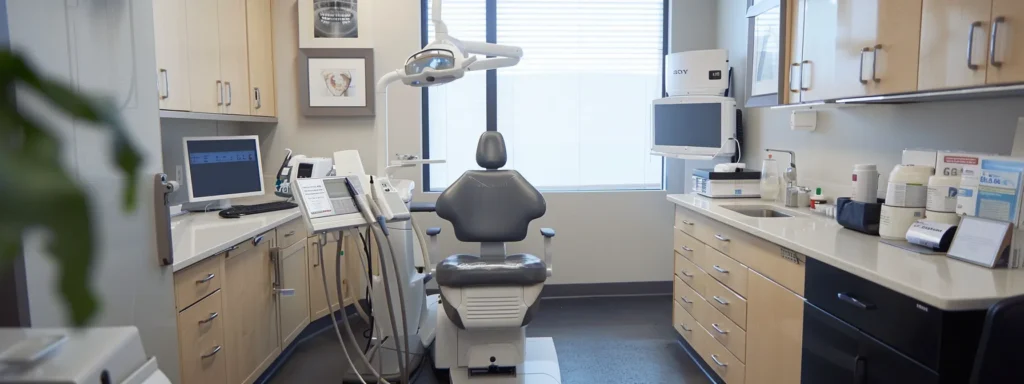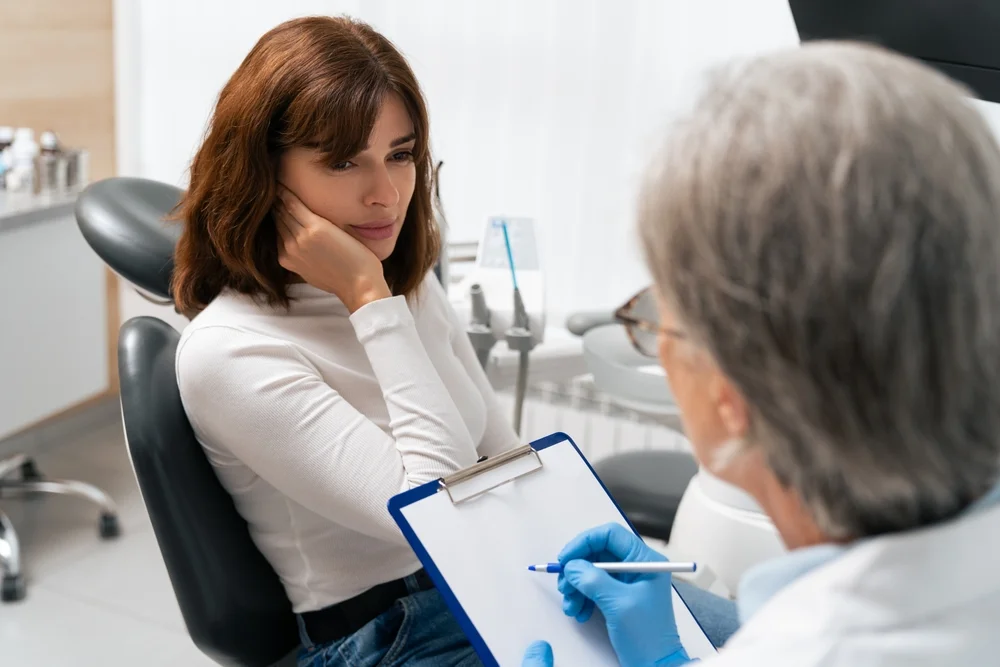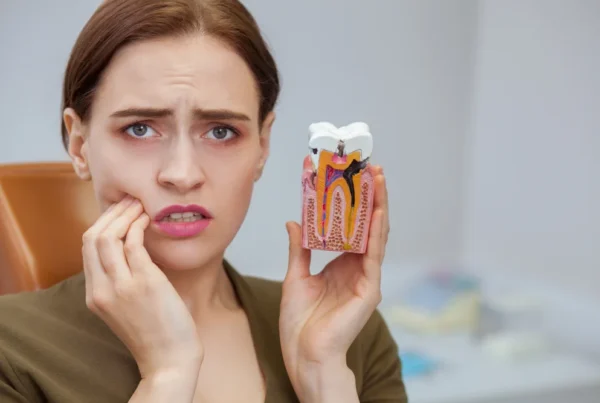Quick response to dental emergencies is critical in preventing lasting damage to a child’s oral health. Parents must be watchful, understanding that even symptoms that appear minor can signal serious dental issues requiring immediate attention.
One of the crucial signs demanding swift action is any problem with a child’s teeth stability or gum condition. For instance, teeth that remain loose over a long period or gums that are extremely red and swollen could point to underlying dental complications that are not immediately painful but still harmful to a child’s oral health.
Additionally, the presence of pain can often be a clear indicator of dental distress. Extreme discomfort that prevents a child from eating or sleeping should prompt parents to seek emergency dental care. Such pain, depending on its intensity and how long it lasts, can be a reliable measure of the serious nature of a dental problem.
Being able to tell the difference between minor dental issues and those requiring emergency care is crucial. Parents must educate themselves on these indicators to ensure they can protect their child’s well-being proactively.
Essential First Aid for Children’s Dental Injuries
Prompt and proper first aid by parents and caregivers is crucial when addressing dental trauma in children. The steps taken immediately following an incident can greatly affect the healing process and potential for successful dental treatment.
Managing tooth displacement requires careful handling to avoid further damage. If a child’s tooth is knocked out or moved out of place, it should be placed in a secure container filled with milk or saliva to maintain its viability. This approach is preferred over using water, which can harm the cells needed for tooth reattachment during later dental procedures.
Dealing with soft tissue injuries, such as cuts inside the mouth or on the gums, calls for gentle yet prompt action. Applying a cold compress can help reduce swelling and manage pain, acting as a temporary solution to comfort the child and limit the damage until a dentist can provide professional care.
Understanding the basic steps of dental first aid helps parents respond effectively during stressful emergency situations.
Recognizing True Dental Emergencies vs. Minor Issues
Parents bear the responsibility of telling the difference between a true dental emergency and a less serious issue that does not require immediate care. Deciding correctly ensures that children receive the necessary intervention without delay, protecting them from further harm.
Urgent situations that need instant dental attention may not always be obvious. Uncontrollable bleeding, for instance, or severe pain that could stem from an abscess, clearly calls for an emergency visit. Similarly, any intense trauma affecting the teeth or jaw demands swift action – these are strong indicators of serious harm that could have lasting effects on a child’s oral health.
On the other hand, minor dental issues, such as a lost filling or a small chip in a tooth, are typically not classified as emergencies:
- True Emergencies: Severe pain, uncontrollable bleeding, knocked-out teeth, facial swelling affecting breathing, or visible tooth fractures exposing nerves
- Can Wait for Regular Hours: Small chips, lost fillings, mild toothaches that don’t disrupt sleep, or loose teeth that aren’t completely displaced
- When in Doubt: It’s always better to call your dentist for guidance rather than wait and risk complications
- Pain Assessment: If pain prevents eating, sleeping, or normal activities, it likely requires emergency attention
While minor issues require professional attention, these problems can usually wait for a scheduled visit during regular dental office hours. Knowing when to act urgently and when it’s safe to wait is key to managing children’s dental health effectively.
Specialized Emergency Care for Young Patients
Specialized care strategies are critical when addressing dental emergencies in children, aiming to reduce distress while prioritizing oral health preservation. Pediatric dental professionals offer customized treatment that addresses both the immediate needs and long-term well-being of the child.
Reducing anxiety during emergency procedures is key to a child’s comfort. Pediatric dentists may use calming techniques to help relax the child, ensuring a trauma-informed approach that can make a significant difference in the child’s experience of dental care. This also helps the dentist perform necessary treatments while minimizing the child’s stress.
The focus of pediatric dental care also involves a strong commitment to preserving the natural development of a child’s teeth. Procedures are carefully chosen to maintain as much of the original tooth structure as possible, avoiding further complications and ensuring the best foundation for long-term dental health.
When to Seek Emergency Dental Care Immediately
Parents play a critical role in evaluating dental problems in children, determining when it’s essential to seek emergency care. Prompt attention from a dental professional can make the difference between quick recovery and long-term complications.
Intense and persistent toothache is a clear sign of a serious dental issue. This level of pain, especially when accompanied by facial swelling that affects vision or breathing, should trigger an immediate visit to the dentist. It signals a problem that could rapidly worsen without professional treatment.
Similarly, a tooth fracture that reveals nerves or blood vessels is unquestionably urgent. Such exposure can lead to severe infection and requires immediate professional care to ensure the best possible outcome for the child’s dental health.
In cases where the severity of a dental issue is unclear, it’s wise to err on the side of caution and consult a dentist. This approach helps to avoid the worsening of dental conditions that could have easily been treated if caught early, thereby protecting the child’s wellbeing.

Working Together: Parents and Dental Professionals
Dentists are essential to both addressing immediate dental emergencies and teaching parents preventative strategies for their children’s dental care. Their expert guidance can dramatically impact the effectiveness of at-home dental first aid and long-term oral health.
Dental professionals provide parents with step-by-step instructions on handling dental mishaps before reaching the dental office. This may include how to preserve a knocked-out tooth, control bleeding, or manage pain, which can significantly improve the chances of a full recovery.
Furthermore, through educational efforts, dentists empower caregivers with strong preventative advice that helps avoid common dental emergencies. This advice can include the importance of regular dental checkups, the proper use of dental sealants, and the use of mouthguards during sports activities.
Dentists and families engaging in a clear and cooperative relationship ensure that care strategies align, leading to consistent and effective care. This team approach is designed to support the child’s immediate needs during an emergency and to maintain their overall dental wellbeing into the future.
Building Strong Prevention Habits
Taking a strong preventive approach is central to safeguarding children’s oral health and minimizing the risk of dental emergencies. Parents and caretakers are crucial in establishing protective habits that reduce potential dental injuries.
Using protective gear such as mouthguards during sports is an effective measure to shield children’s teeth from traumatic impacts. Custom-fit mouthguards are particularly important for children engaged in contact sports, and regular use is essential in preventing a host of dental injuries such as fractured, displaced, or lost teeth.
Routine dental checkups play a vital role in preventing dental complications. These regular visits enable early identification and management of potential issues that, if left unchecked, may develop into critical emergencies:
- Sports Protection: Custom mouthguards for contact sports and activities with fall risk significantly reduce dental injury chances
- Regular Checkups: Routine visits every six months help catch small problems before they become emergencies
- Daily Oral Hygiene: Teaching proper brushing and flossing techniques from an early age prevents decay and gum disease
- Safe Environment: Childproofing homes and teaching children about dental safety reduces accident risk
Emphasizing the practice of good oral hygiene, such as regular brushing and flossing from an early age, also contributes to preventing dental emergencies. Educating children on the proper techniques and habits helps instill a lifelong commitment to oral care.
Protecting Your Child’s Smile for Life
Managing pediatric dental emergencies effectively demands a strategy that focuses on preparation, education, and access to prompt professional care. Such an approach ensures a comprehensive defense against both the occurrence and escalation of oral health issues in children. Parents and caregivers should not solely focus on immediate reactions to dental incidents but should cultivate a risk-aware environment through protective gear and emergency knowledge.
Fostering education around oral health within the family unit plays a vital role in safeguarding a child’s dental well-being. Informing children about the importance of daily oral hygiene practices and routine dental checkups is a proactive step in preventing emergency scenarios. When empowered with knowledge and best practices, children are less likely to encounter severe dental crises.
At Dynamic Family Dentistry, we understand that dental emergencies with children can be frightening and stressful for the entire family. Our pediatric emergency services are designed specifically for young patients, combining expert clinical care with a compassionate, child-friendly approach that puts both you and your child at ease. We’re equipped to handle any pediatric dental emergency, from knocked-out teeth to severe pain, with the specialized techniques and gentle care your child deserves. Schedule your appointment today!
Book Your Consultation Today!
Dr. Bethaney B. Brenner DMD
8 Milford St, Burlington, CT 06013
Frequently Asked Questions
What should I do if my child has a dental emergency?
Act quickly but calmly. If a tooth is knocked out, rinse it without touching the root, and try placing it back in the socket. If that’s not possible, put it in milk and call your dentist immediately.
Can dental emergencies in children be prevented?
Yes, many dental emergencies can be prevented with protective equipment like mouthguards during sports and good oral hygiene habits, including regular check-ups to catch potential issues early.
How can I tell if it’s a dental emergency or if it can wait?
If your child experiences severe pain, bleeding that won’t stop, or has a loose or knocked-out tooth, it’s an emergency. For mild toothache or a small chip, schedule an appointment during normal hours.
Related Articles





